Flora of sandstone plateaus, spurs and valleys
Hawkesbury Sandstone country, with its thin, nutrient-starved soils, carries an extremely rich and locally colourful flora. Many different plant communities are represented, and rather than describe them all in formal terms, let’s look at a key selection in the context of their geological, geomorphic and microclimate settings in the GeoRegion.
Wet heath and upland swamps
Status - Coastal Upland Swamps in the Sydney Basin Bioregion an endangered community.
The GeoRegion is a high rainfall area – mean annual rainfall at Terrey Hills is 1169 mm. It’s important to understand the facility of a particular landform to retain or shed rainwater. Swamp and wet heath floras are fed directly and indirectly by rainfall runoff from rock platforms, a critical influence on their vegetation. Runoff is shed rapidly and soaks into the adjoining bushland soils, at times saturating them for long periods.
Photo: Moss carpets on sandstone platforms soak up rainwater and act as traps for seeds of shrubs, ferns and graminoids. Here, near the Duckholes Trail, the shrubs are moisture tolerant species like Darwinia fascicularis and Baeckea breviflora

In very wet, temperate climates like western Tasmania, swamp vegetation can survive on quite steep slopes, however in the GeoRegion, upland swamps on sandstone plateaus occupy shallow headwaters of valleys preserved on an older more subdued land surface that was uplifted then variably dissected.
The valley-deepening process not advancing far enough upstream to reach their gently profiled headwaters.
Photo: Elvina Waterfalls, Lambert Peninsula, a minor stream plunges from 105 m to 50 m altitude through a knickzone towards Pittwater at Lovett Bay, Ku-ring-gai Chase National Park.
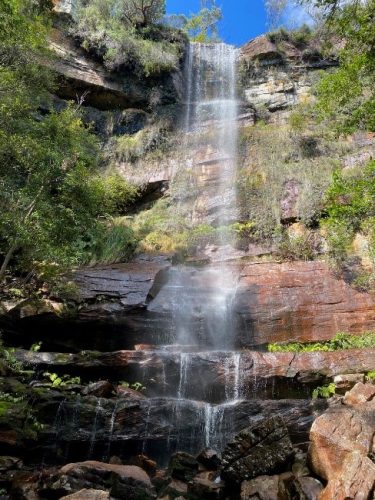
Swamps feed the uppermost reaches of streams that rise on the plateaus then plunge via knickpoints and knickzones through cascades, waterfalls, swallets and tunnels into younger rocky valleys and gorges. They function thus as the kidneys of river systems, filtering and purifying the waters of small streams that rise on undisturbed sandstone plateaus. Many such streams feed our water supply dams, and upland swamps have a unique but acutely vulnerable role in sustaining them. This is a major reason why their plant communities are listed as threatened.
Photo: Oxford Falls West, Oxford Creek; one of a chain of falls and rapids in a knickzone falling from 50m to 20m over 400m of course
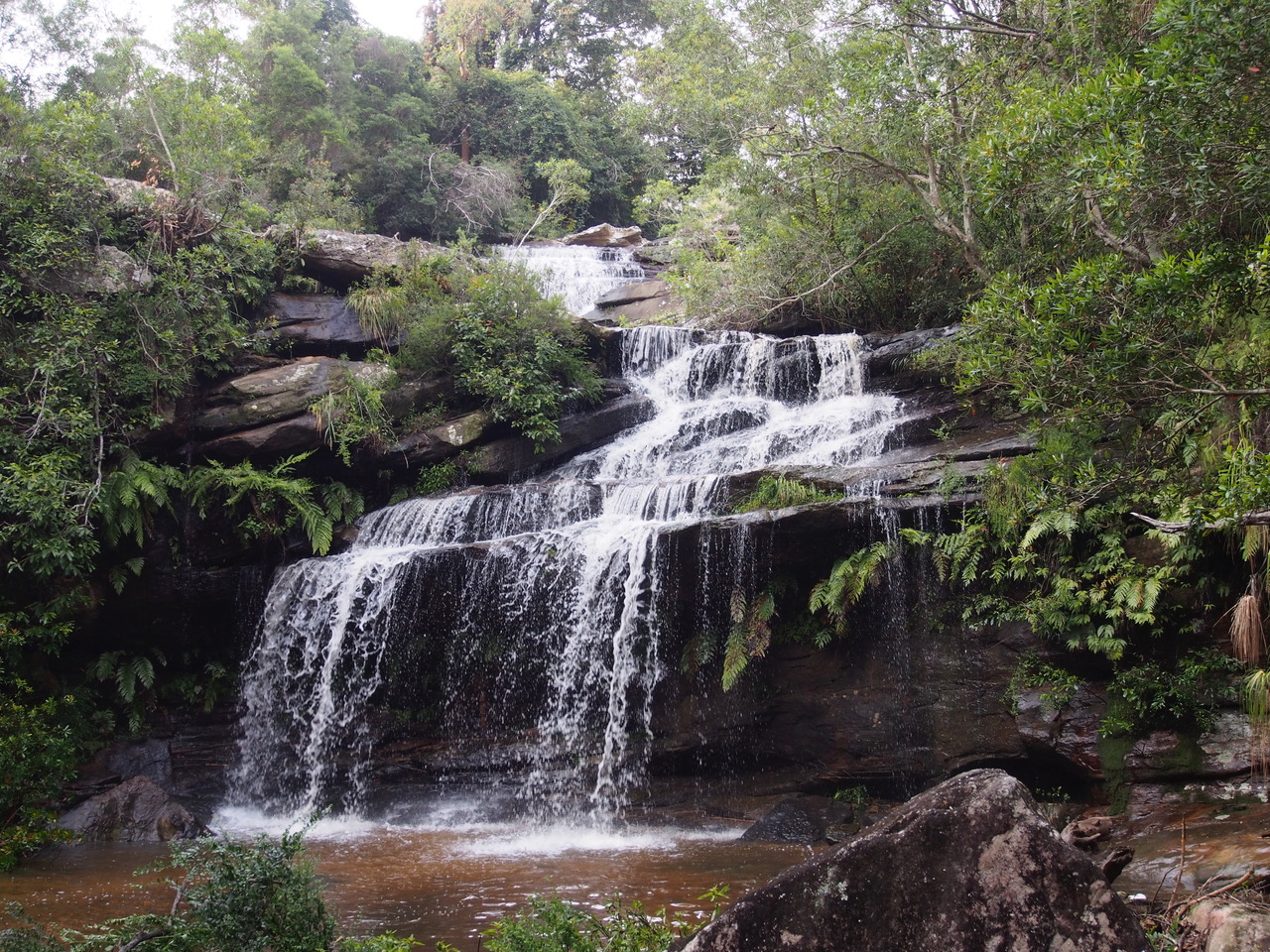
Wet heaths and coastal upland swamps have been highlighted as among the most diverse shrub-based communities on Earth and carry a large assemblage of shrubs, sedges, rushes, herbs and ferns. A shrub-dominant wet heath flora is common in skeletal soils on level ridgetops that are fed water from bare sandstone platforms. Species include fern-leaved banksia Banksia oblongifolia, common conesticks Petrophile pulchella, dagger hakea Hakea teretifolia, the grass tree Xanthorrhoea resinifera, scrub sheoak Allocasuarina distyla, Darwinia fascicularis subsp. fascicularis, peach blossom tea-tree Leptospermum squarrosum, Baeckea species and Micromyrtus ciliata. Graminoids include Empodisma minus, Gymnoschoenus sphaerocephalus, Lepidosperma filiforme and saw sedge or swordgrass Gahnia species.
Photo: Fern-leaved banksia Banksia oblongifolia, common in wet heath and swamp borders.
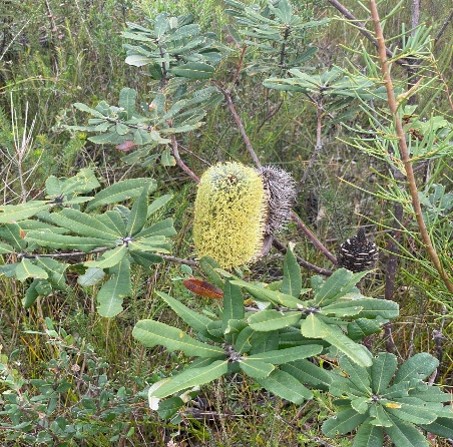
As lovers of acidic soils, members of Ericaceae family are common, notably coral heath Epacris microphylla, blunt-leaf heath E. obtusifolia and in wetter sites, pink swamp heath Sprengelia incarnata. The pea flowers (Fabaceae–Faboideae) include Viminaria juncea, Dillwynia floribunda, Aotus ericoides and Sphaerolobium vimineum. Proteaceae such as Hakea, Banksia and Petrophile are abundant in the shrubby fringes whereas swamp banksias Banksia robur are adapted to thrive in the actual swamps.
Photo: Darwinia fascicularis, an often dominant small to medium shrub bordering rain-washed rock platforms.
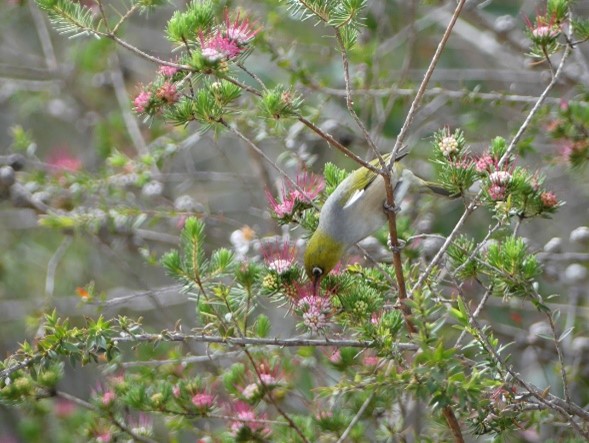
Rainwater can trickle and seep below the many low cliffs and benches to create moist to swampy soils that nurture moisture-loving plants, such as coral and umbrella ferns, often in dense stands of a single species. Rare and endangered Haloragodendron lucasii is endemic to Hawkesbury Sandstone on Sydney’s north side in just such settings and is one of the more striking and interesting plants in the GeoRegion and one of its rarest recorded species.
Photo: Haloragodendron lucasii, extremely rare and listed endangered, in wet soil beneath sandstone bench, Ku-ring-gai Chase.

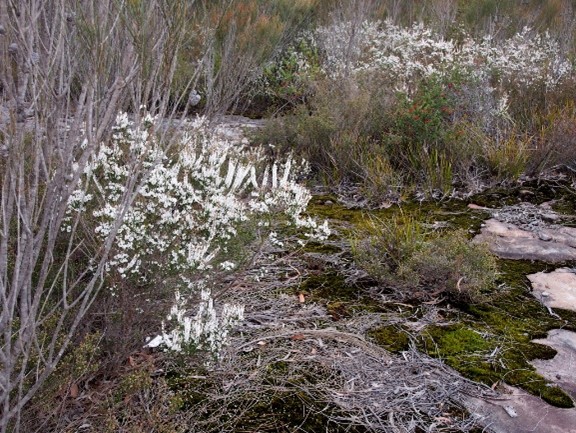
Photo: Coral heath Epacris microphylla, widespread and common, often dominant, in wet heath and mossy hollows on rock platforms.
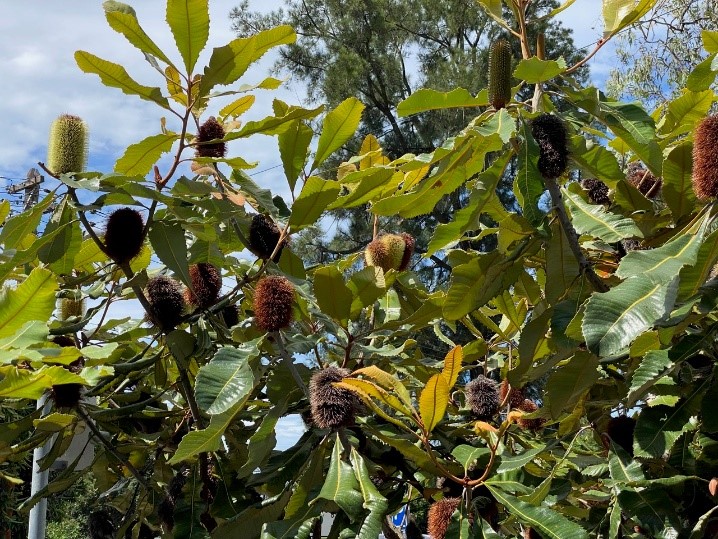
Photo: Swamp banksia Banksia robur, highly wet soil tolerant and the only banksia species within swamp vegetation; Chiltern Trail, Ku-ring-gai National Park, Ingleside.
